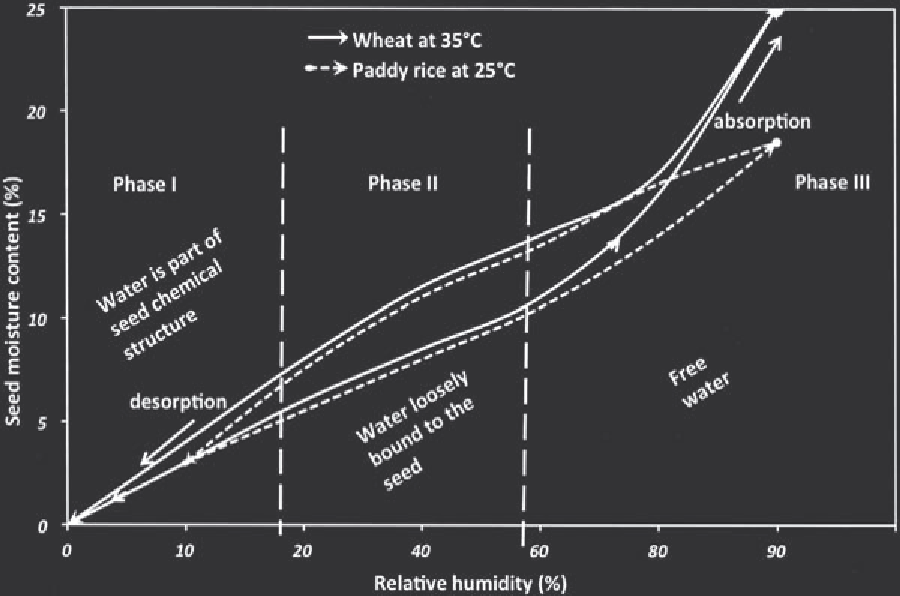Agriculture Reference
In-Depth Information
Figure 11.1. The three phases of the hygroscopic equilibrium relationship between seed moisture content and
relative humidity in wheat and rice (from Hubbard et al., 1957, and Breese, 1955).
remove all bound water also removes volatile chemical substances, especially from seeds with high oil con-
tent. Thus, the heat level used in removing moisture should leave enough water in the seed to compensate
for the volatile substances removed by the heat.
Factors Affecting Seed Moisture Content
Three principal factors affecting seed moisture content include relative humidity, temperature of the ambi-
ent air, and seed chemical composition (AOSA, 2007).
Relative humidity (RH).
Seeds are hygroscopic in nature and have great afinity for water. They
readily absorb and desorb water from the surrounding air. Equilibrium is attained when the seed no longer
absorb or lose moisture.
Temperature of the ambient air.
High temperatures reduce the percentage of relative humidity while
low temperatures increase the RH percentage. These relationships are important to help explain changes
that can occur in seed moisture content when seeds are stored in open-air. For example, during the day, RH
is lowest at the highest temperatures in the afternoon and highest at the lowest temperature at night. As a
rule of thumb, conditions for successful seed storage exist when the sum of RH and storage temperature
(°F) is less than 100.
Seed chemical composition.
The polar property of water causes it to be attached to seed storage com-
pounds with varying intensity, with the greatest attraction being for protein followed by starch while the
lowest is for lipids.


